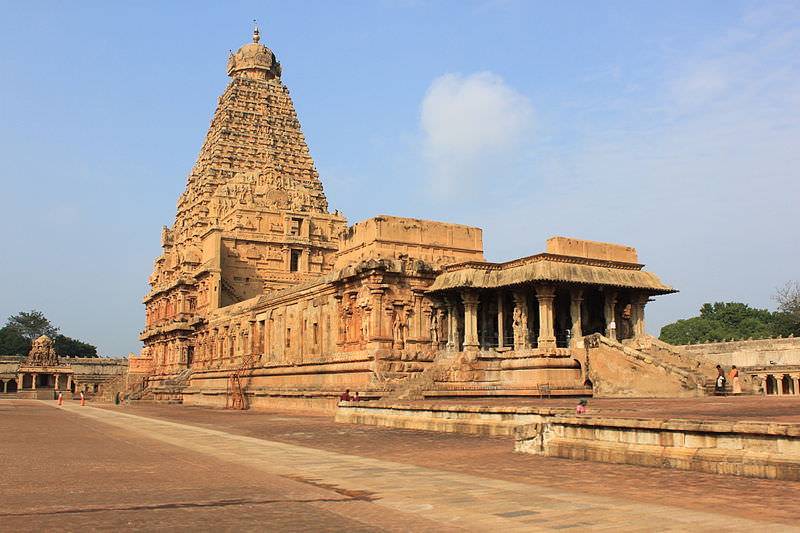Thanjavur Temple Architecture

Thanjavur architecture, also known as the Thanjavur Maratha style or Dravidian architecture, refers to the distinctive style of temple architecture that developed in the town of Thanjavur (formerly known as Tanjore) in the southern Indian state of Tamil Nadu. It reached its peak during the reign of the Chola dynasty in the 10th to 14th centuries and continued to flourish under the rule of the Nayak and Maratha dynasties.
Key Features of Thanjavur Architecture:
Towering Gopurams: Thanjavur temples are characterized by their towering gateway towers called gopurams. These gopurams are intricately carved with depictions of deities, mythological stories, and celestial beings. They serve as the entrance to the temple complex and are often decorated with vibrant colors.
Vimana: The main sanctum of the temple, called the vimana, is constructed in the form of a pyramid-like tower. The vimana is usually topped with a kalasha (ceremonial pot) and a finial. The sculptural work on the vimana is highly detailed, showcasing deities, celestial beings, and intricate patterns.
Mandapas: Thanjavur temples typically have pillared halls or mandapas, which serve as spaces for religious rituals, gatherings, and processions. The mandapas are adorned with intricately carved pillars depicting various mythological scenes and deities.
Shikhara: Many Thanjavur temples feature a secondary tower called the shikhara above the main sanctum. The shikhara is usually smaller in size and has its own decorative elements.
Temple Complex Layout: Thanjavur temples are known for their large and well-organized temple complexes. The central shrine is surrounded by concentric enclosures known as prakarams. These enclosures house smaller shrines, subsidiary deities, ponds, gardens, and other structures associated with the temple.
Frescoes and Paintings: Some of the temples in Thanjavur also feature exquisite frescoes and paintings on the ceilings and walls. These paintings depict scenes from Hindu mythology, religious stories, and the lives of saints and kings.
Prominent examples of Thanjavur Architecture include the Brihadeeswarar Temple (also known as the Big Temple) in Thanjavur, which is a UNESCO World Heritage site, as well as the Airavatesvara Temple in Darasuram and the Gangaikonda Cholapuram Temple.
Thanjavur architecture represents the unique and rich cultural heritage of the region, showcasing the mastery of craftsmanship, sculpture, and temple design during the Chola, Nayak, and Maratha periods. It continues to inspire and influence contemporary temple architecture in South India.

